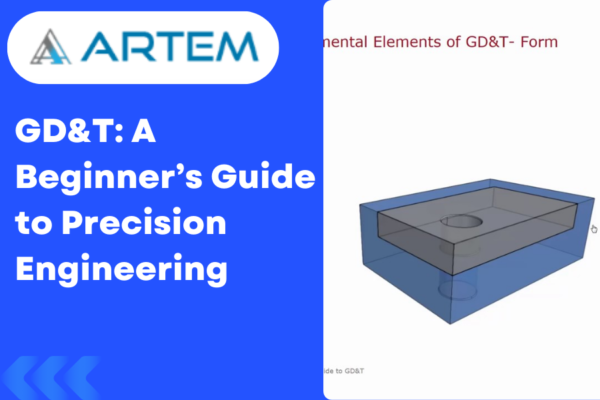Mastering Sheet Metal Formulas: Your Comprehensive Guide to Precision Crafting
Welcome to the fascinating realm of sheet metal formulation, where precision meets creativity. Mastering the formulas involved in sheet metal design is like uncovering the language of a skilled craftsman. In this blog, we’ll delve into the essential formulas that underpin the art of sheet metal work, providing you with the knowledge to craft your designs with accuracy and finesse.
- 1. Understanding Sheet Metal Thickness (T)
The thickness of a sheet metal piece is a fundamental parameter in any design. It dictates the material’s strength, weight, and overall structural integrity.
Formula:
Thickness T= Weight of the sheet Surface Area of the sheet
Example: If you have a sheet metal piece weighing 10 pounds with a surface area of 5 square feet, the thickness (T) would be 10/5=2 pounds per square foot.
2. Calculating Bend Allowance (BA)
Bend allowance is a crucial factor in determining the flat pattern length before bending. It considers the material’s elasticity during the bending process.
Formula:
Bend Allowance (BA)=180 ×Bend Angle ×Radius+K-factor ×Material Thickness
Example: For a 90-degree bend with a radius of 1 inch, a material thickness of 0.05 inches, and a K-factor of 0.33, the bend allowance (BA) would be calculated using the formula.
3. Determining Bend Deduction (BD)
Bend deduction accounts for the stretching of material on the outer surface of a bend and is crucial for accurate flat pattern development.
Formula:
Bend Deducation BD= Bend Allowance BA-Material Thickness × 180 ×Bend Angle
Example: Using the values from the previous example, the bend deduction (BD) can be calculated.
4. Calculating Developed Length (DL)
Developed length is the length of the sheet metal required for a specific design, considering bends and their allowances.
Formula:
Developed Length DL=Sum of All Flat Lenghts+Bend Allwances (BA)
Example: If you have a flat pattern length of 10 inches with multiple bends, each with its bend allowance, the developed length (DL) is calculated by summing these lengths.
5. Determining Hole Patterns: Equally Spaced Holes
In sheet metal design, equally spaced holes are a common feature. Calculating their positions ensures uniformity and precision.
Formula:
Distance Between Holes= Lemgth of SheetNumber of Holes-1
Example: For a sheet metal piece with a length of 20 inches and four equally spaced holes, the distance between holes is calculated using the formula.
6. Bend Radius:
The bending radius is the minimum curvature a material can endure during the bending process without causing undue stress, deformation, or damage.
Formula:
Bend Radius R= Material Thickness ×Bend Factor
Example: Imagine you’re working with a sheet of stainless steel with a thickness of 1.5 mm. If the bend factor for stainless steel is 0.016, the bend radius would be 1.5 mm x 0.016 = 0.024 mm.
7. K-Factor:
The K-factor in sheet metal design represents the ratio of the neutral axis location to the material thickness, crucial for accurate bend allowance calculations during manufacturing.
Formula:
K-factor k= inside Radius-Material Thickness 2 ×Material Thickness
Example: Let’s say you have a sheet metal part with an inside radius of 3 mm and a material thickness of 2 mm. The K-factor would be (3 mm – 2 mm) / (2 x 2 mm) = 0.25.
8. Flat Pattern Length:
Flat pattern length is the total length of a 2D sheet metal pattern, accounting for all bends and features, crucial for material layout and manufacturing.
Formula:
Flat Pattern Length=Bend Allowance ×Bend Angles
Example: For a sheet metal part with a bend allowance of 5 mm and three 90-degree bends, the flat pattern length would be 5 mm x 3 = 15 mm.
9. Setback:
Setback is the distance from the bend line to the innermost surface of the material after bending, crucial for accurate flat pattern development.
Formula:
Setback=0.33 ×Material Thickness
Example: For a sheet metal part with a material thickness of 1.2 mm, the setback would be 0.33 x 1.2 mm = 0.396 mm.
10. Hem Allowance:
Hem allowance is an additional material provided along the edge of a sheet metal component to create a folded, reinforced, or aesthetically finished edge.
Formula:
Hem Allowance =2×Material Thickness
Example: If you’re creating a hem on a sheet metal part with a material thickness of 1.5 mm, the hem allowance would be 2 x 1.5 mm = 3 mm.
11. Deciphering Minimum Flange Widths
Determining the minimum flange width ensures that the material can withstand bending processes without deformation or failure.
Formula for Minimum Flange Width (b):
Minimum Flange Thickness=2 ×Material Thickness
Example: Let’s consider a sheet metal component with a thickness (t) of 1.5 mm. Using the formula, the minimum flange width (b) would be 2×1.5=32×1.5=3 mm.
Formula for Minimum Hole Diameter (D):
Minimum Hole Diameter=2×Material Thickness+Hole Clearance
Example: For a sheet metal material with a thickness (t) of 2 mm, the minimum hole diameter (D) would be 2×2+1.2=5.22×2+1.2=5.2 mm.
Navigating Blank Diameters for Drawing Precision
Blank diameters determine the size of the initial flat pattern before bending, influencing the overall success of the sheet metal forming process.
Formula for Blank Diameter (BD):
Blank Diameter=Developed Length of part+K-factor ×Inside bend Radius
Example: Consider a sheet metal part with a developed length (L) of 150 mm, a K-factor (K) of 0.33, and an inside bend radius (R) of 5 mm. The blank diameter (BD) would be 150+0.33×5=151.65150+0.33×5=151.65 mm.
Conclusion: Crafting with Precision and Knowledge
Armed with these formulas, you now possess the tools to navigate the intricate world of sheet metal formulation. Whether you’re calculating thickness, allowances for bends, or developing the perfect hole pattern, these formulas are your guide to crafting with precision and knowledge. Embrace the artistry of sheet metal work, and let these formulas be your companions in every design endeavor. Always consult relevant standards and guidelines for accurate calculations in specific scenarios. Happy crafting!





